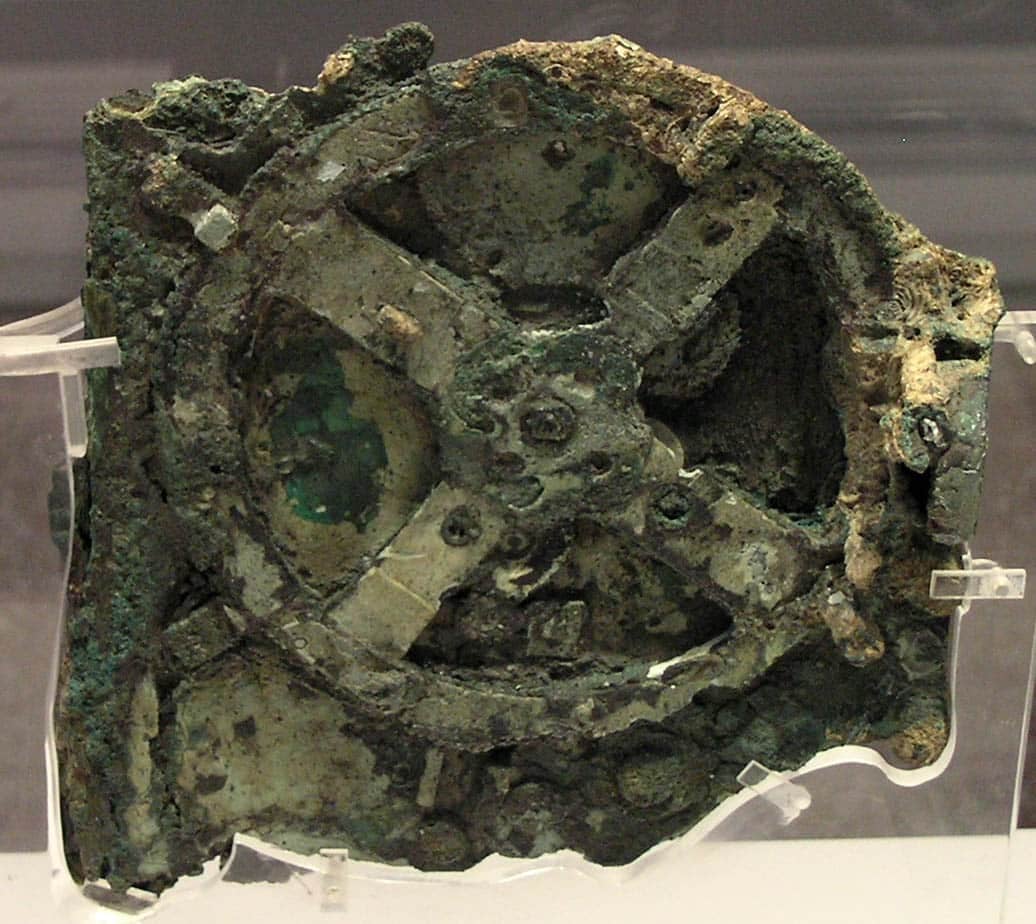Is There Any Truth to Recent Reports Calling the Antikythera Mechanism a Toy?
Source: GreekReporter.com

Recent reports have been circulating that the famous Antikythera Mechanism may have just been a toy for children rather than an advanced ancient computer. What is the basis for this remarkable claim, and does it have any factual basis?
What is the Antikythera Mechanism?
Firstly, let us briefly review: What is the Antikythera Mechanism? It was discovered in 1901 by divers off the island of Antikythera’s coast, near the Gulf of Laconia. It had partially eroded and clearly had some pieces missing. Nevertheless, its basic design was discernible.
The Antikythera Mechanism was made of numerous gears, which were evidently turned by a hand crank. Many researchers understand it to be an ancient analogue computer, a machine that could predict the movements of various celestial bodies.
Not only did the Antikythera Mechanism display the movement of the sun, but it also predicted solar eclipses. There was also a so-called Games dial, which kept track of four-year periods corresponding to some ancient Greek athletic games. Other dials kept track of separate periods and astronomical processes.
A new study
The idea that such an advanced machine might have been a toy for children initially seems absurd. Yet, any news reports have made this claim. What is the basis for this idea?
A recent study by researchers at the National University of Mar del Plata in Argentina examined the device’s intricate workings. They analyzed the exact shape and measurements of the pieces and investigated how well the device would work in the real world.
To do so, they worked on the findings of a previous study from 2011, conducted by Mike G Edmunds from Cardiff University. They used Edmunds’ conclusions regarding the imperfections in the exact positioning of the teeth on the gears as the basis for their calculations.
Professor Esteban Guillermo Szigety and Doctor Gustavo Francisco Arenas are National University of Mar del Plata researchers who led the study. They also examined how well the device’s triangular teeth would work, along with Edmunds’ findings on the manufacturing imperfections of the Antikythera Mechanism.
Interestingly, this new study reveals that the gears’ triangular teeth would work, despite being unusual. However, by combining the triangular teeth with the imperfections found by Edmunds, the Antikythera Mechanism appears to have had some fundamental issues.
Does this study prove that the Antikythera Mechanism is just a toy?
The two researchers from the University of Mar del Plata found something fascinating. They found that the Antikythera Mechanism would have regularly jammed. In other words, it would have essentially been non-functional. This leads to a big question:
What is the Antikythera Mechanism’s actual purpose, if it’s non-functional as a computer?
The study appears to demonstrate that this ancient device could not have been used as a rudimentary computer to predict astronomical cycles, simply because it kept jamming. Therefore, what was it used for?
Some news reports have claimed that the Antikythera Mechanism may have been just a toy for a child based on this. However, does the study show this? Is this even what the researchers claimed? Let’s examine this further.
The real conclusions of this study
Contrary to news outlet claims, Professor Esteban Guillermo Szigety and Doctor Gustavo Francisco Arenas never claimed that the Antikythera Mechanism was probably just a toy. They never even mention such a possibility in their study.
The closest they come to is raising the possibility that the device may have been non-functional. In their paper’s ‘Conclusions’ section, they state “It is conceivable—though unlikely—that someone would go to the trouble of constructing such a complex yet non-functional device.”
While they acknowledge that this is “conceivable”, they do not consider this the most likely conclusion. Rather, they state that Edmunds’ findings regarding the manufacturing imperfections of the device are more likely to be in error. Regarding how they could be wrong, they wrote:
“The effects of 2,000 years underwater likely caused corrosion that may have deformed the gears, while the resolution of the computed tomography scans might not be sufficient to precisely detect the tips or valleys of the teeth. Additionally, since many gears are partially destroyed, Edmunds had to work with incomplete data.”
Based on these points, the researchers speculate that Edmunds unwittingly exaggerated the imperfections. They propose that the gears of the Antikythera Mechanism likely fit together better than Edmunds concluded.
The truth about the Antikythera Mechanism
What is the result of all this? In short, there is no real evidence that the Antikythera Mechanism was a toy. This new study indicates that the gears might have jammed, but this relies on Edmunds’ 2011 calculations being correct.
These apparent imperfections are likely the result of physical distortion the device has undergone over the past 2,000 years.
Even if the Antikythera Mechanism did frequently jam, this does not mean it was created to be a toy. This could just indicate that it did not work as well as intended.
The original article: belongs to GreekReporter.com .
